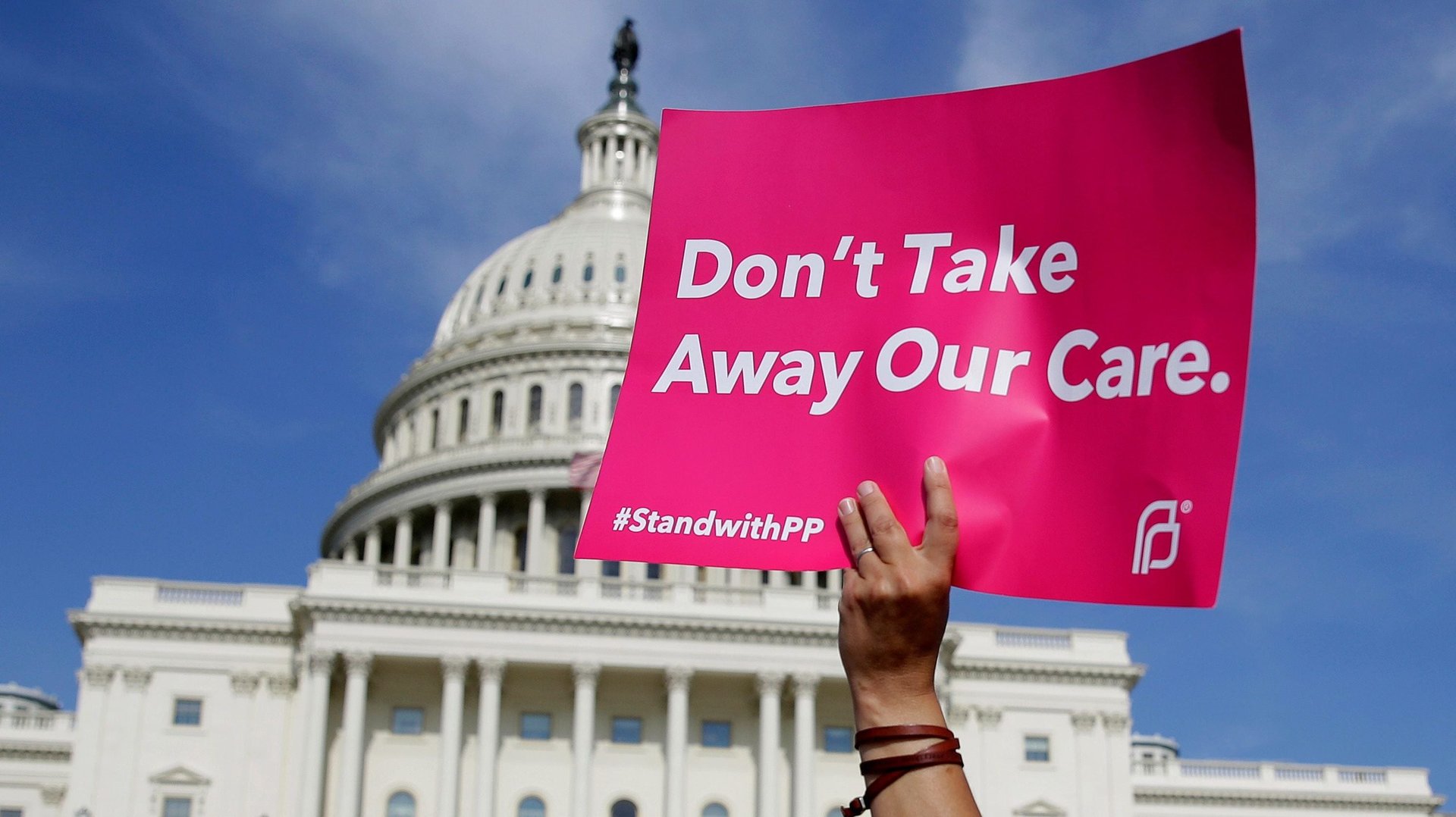What Trump’s new abortion rule could mean for women’s health
US president Donald Trump has begun the process of putting in place a new policy that would prevent an important source of federal funding from going to clinics that provide abortions.


US president Donald Trump has begun the process of putting in place a new policy that would prevent an important source of federal funding from going to clinics that provide abortions.
The administration’s proposal was filed to the White House Office of Management and Budget Friday (May 18) for an interagency review, according to the Washington Post, but was not made public at the time of this writing. It is the latest in a series of moves by the Trump administration to restrict abortion rights in the US and specifically to target Planned Parenthood, the country’s largest abortion provider.
The new policy, which marks a return to a 1988 law instituted by Ronald Reagan, would prevent federal funding under the Title X program from going to any facility that provides abortions or that refers patients to a caregiver that will provide one.
The Reagan-era policy also prevented health providers and clinics that received federal funding from even discussing abortion with their patients (which earned it the nickname of “gag rule”). According to the New York Times, however, “the new version of the policy would not impose a blanket prohibition on abortion counseling.”
What would the new policy mean for women?
No government dollars currently go toward paying for abortions. Instead, organizations like Planned Parenthood often use Title X funds to subsidize other reproductive health services for uninsured or low-income women.
So if Trump administration issues new funding guidelines for Title X, the only federal entitlement program that funds birth control, it will not meaningfully affect the relationship between taxpayer dollars and abortions in the US. But facilities that receive Title X funds will no long be able to either perform abortions or refer women to doctors who perform them, which essentially means cutting Planned Parenthood out of the Title X program.
Hal Lawrence, the executive vice president and chief executive of the American College of Obstetricians and Gynecologists, wrote in an email to Quartz [emphasis ours]:
Title X is the only federal grant program exclusively dedicated to providing low-income patients with access to effective family planning and related preventive health. So, for the many health centers and patients that rely on this program for their contraceptive care, these changes will leave them with no alternatives.
Restricting access to this funding is likely to shutter health centers or dramatically narrow the scope of care health centers are able to provide. This endangers women’s health, leaving them with fewer options for safe, timely, and comprehensive preventive care, and is certain to delay provision of care or altogether deter women from seeking care at all.
In 2014, Planned Parenthood provided 323,999 abortions, or close to half of all reported abortions performed in the US that year, according to the Centers for Disease Control and Prevention. But the people who will be most impacted by the new rule will be women who use Planned Parenthood clinics for routine preventive care, like STD testing, pap smears, and breast exams. That’s because, according to Planned Parenthood, only about 3% of the services it provides are abortions. (That number is the subject of an ongoing debate.)
The new policy would particularly effect low-income women without easy access to other affordable reproductive health facilities. According to a recent analysis, “in one-fifth of the counties in which they are located, Planned Parenthood sites are the sole safety-net family planning center.” And 30% of the more than 19 million US women who need publicly supported access to birth control are uninsured, according to the Guttmacher Institute. So, if anything, the new rule is likely to cause an increase in unintended pregnancies, and to decrease the quality of care for women who rely on federally-funded health clinics across the United States.
The new rule is, essentially, an ultimatum to health-care providers: If they want to stay federally funded, qualified health care providers will now be forced not just to stop providing abortions, but also to stop referring patients to abortion providers as part of the normal discussions that surround family planning and health-care options.
This new policy would be a win for the conservative, pro-life lobby. But it could be challenged: in the wake of the Reagan-era “gag rule,” many physicians and clinics argued that it violated physicians’ First Amendment rights as well as women’s right to abortion, enshrined in Roe v. Wade. The case went all the way to the Supreme Court where, in a 1991 decision in Rust v. Sullivan, the Court ruled five-four in favor of the gag rule. (Bill Clinton rescinded it in 1994.)
In the meantime, however, millions of women—especially in low-income and medically under-served communities—would be hurt by the policy.